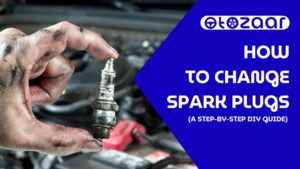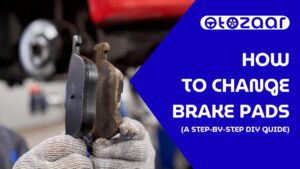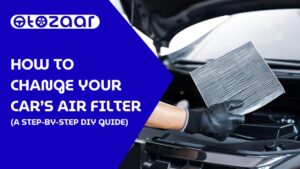Imagine you’re cruising down the highway, enjoying the drive, and suddenly—bang!—your tire blows out. It’s a scary moment, right? But don’t worry, knowing how to handle a tire blowout can make a world of difference in keeping you safe. Whether you’ve been driving for years or are relatively new behind the wheel, it’s crucial to understand what to do in this kind of situation. Here’s a step-by-step guide to help you navigate through a tire blowout with confidence and composure. Let’s dive in!
Steps to be Taken After a Tire Blowout on a Highway
1. Stay Calm
First and foremost, take a deep breath. Keeping your cool in this stressful situation is crucial. Panicking can lead to rash decisions that might make things worse. A moment of calm can help you think clearly and react appropriately.
2. Do Not Hit the Brakes
Your immediate reaction might be to slam on the brakes but resist that urge. Hitting the brakes suddenly can cause your vehicle to skid or spin out of control. Instead, ease off the accelerator and let the car slow down gradually. This will help you maintain better control and prevent further complications.
3. Grip the Steering Wheel
Firmly grip the steering wheel with both hands, ideally at the 10 o’clock and 2 o’clock positions. Your car might pull to one side depending on which tire has blown, so having a solid grip will help you steer and keep the vehicle steady. Keeping control of the steering wheel is essential to maneuvering safely to the side of the road.
4. Steer Straight
Your main goal now is to keep the vehicle going straight. If the blowout is in a front tire, your car will likely pull toward that side. Resist the urge to make any sharp or sudden movements. Instead, gently steer to counteract the pull, keeping your motions smooth and controlled to avoid oversteering, which could cause you to lose control completely.
5. Gradually Slow Down
Next, allow your vehicle to slow down naturally. Ease off the accelerator pedal gently. This gradual deceleration helps maintain control and stability, making it easier to guide your car safely off the road. Avoid using the brakes until your speed has reduced significantly.
6. Activate Emergency Lights
As soon as you have your vehicle under control and are starting to slow down, turn on your hazard lights. This will alert other drivers that something is wrong and that they should proceed with caution. Your hazard lights are crucial for signaling to others that you’re dealing with an emergency situation.
7. Pull Over Safely
As your vehicle slows to around 30 mph, start looking for a safe place to pull over. Ideally, you want to move to the right side of the road. Avoid stopping in traffic or on the left side, as these areas are more hazardous. Look for a wide shoulder or an emergency stopping lane where you can safely get out of traffic.
8. Apply the Brakes Gently
Once you’re off the road and your speed has decreased significantly, gently apply the brakes to bring your vehicle to a complete stop. Avoid sudden braking to maintain stability and control.
9. Use Emergency Flashers
Keep your emergency flashers on once you’ve come to a stop. This alerts other drivers that your vehicle is stationary and that they should proceed with caution. Your flashers are essential for ensuring your safety and that of other motorists on the road.
10. Stay Safe
If it’s safe to do so, exit your vehicle and stand a safe distance away from traffic while you wait for help. If you need to change the tire yourself, make sure the area is secure and that you’re visible to other drivers. Use caution and be aware of your surroundings at all times
Additional Tips for Preventing Blowouts
Regular Maintenance
One of the best ways to prevent a tire blowout is through regular maintenance. Make it a habit to frequently check your tire pressure, tread depth, and overall tire condition. Look for any signs of wear and tear, such as cracks, bulges, or objects embedded in the tire. Catching these issues early can help you avoid a blowout on the road.
Regular Maintenance
Always ensure your tires are inflated to the manufacturer’s recommended pressure. You can usually find this information on a sticker inside the driver’s door or in your vehicle’s manual. Properly inflated tires not only help prevent blowouts but also improve your car’s fuel efficiency and handling.
Regular Maintenance
Be mindful of your vehicle’s weight limit. Overloading your car can put excessive stress on your tires, increasing the risk of a blowout. Stick to the recommended weight capacity to keep your tires in good shape and your drive safe.
By following these steps, you can handle a tire blowout more effectively, reducing the risk of accidents and enhancing your safety on the highway. Regular maintenance, proper inflation, and avoiding overloading are key practices that will help keep your tires in optimal condition and prevent unexpected blowouts. Stay safe out there!

![How to Handle a Tire Blowout on the Highway [Step-by-Step Guide]](https://otozaar.com/wp-content/uploads/2024/07/how-to-handle-a-tire-blowout.jpg)




